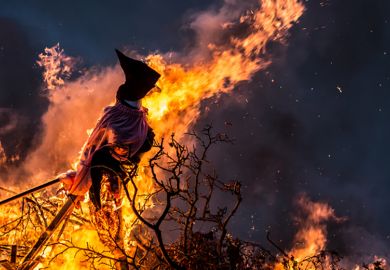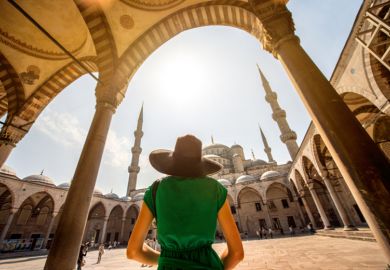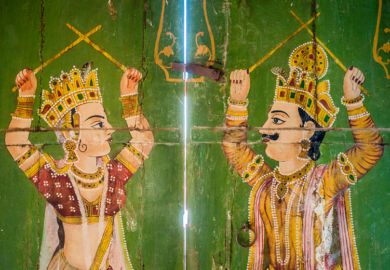Five Ways of Being a Painting and other essays
Notting Hill Editions
This book showcases the six best submissions to Notting Hill Editions’ third essay prize, worth £20,000, which received more than 500 submissions this time. As on earlier occasions, academics are prominent among those selected. Karen Holmberg, an associate professor in creative writing at Oregon State University, was shortlisted for a piece exploring the work of the British collagist John Digby. Novelist Patrick McGuinness, who is also professor of French and comparative literature at Oxford, was shortlisted for his meditations on Orhan Pamuk’s Museum of Innocence in Istanbul. Yet the overall prize went to William Max Nelson, assistant professor of history at the University of Toronto, for his wide-ranging yet deeply personal reflections on how painters have incorporated their own bodies into their art.
The Ring of Truth And Other Myths of Sex and Jewelry
Wendy Doniger
Oxford University Press
Stories about rings, argues Wendy Doniger, Mircea Eliade distinguished service professor of religion at the University of Chicago, often touch on “marriage and adultery, love and betrayal, loss and recovery, identity and masquerade”. Many are based on what she calls the “slut assumption” (that women only get rings from the men they sleep with) or tell of how “women use jewellery to their advantage…while men use (or try to use) rings to wriggle out of promises to women”. Although best known as a scholar of Sanskrit and Indian culture, Doniger here ranges from ancient Greece to Hollywood musicals, from the Arabian Nights to advertising via Marie Antoinette. If we want to know about the fears and fantasies surrounding relations between the sexes, rings can offer us countless striking insights.
Clouds: Nature and Culture
Richard Hamblyn
Reaktion Books
“Clouds have been objects of delight and fascination throughout human history, their fleeting magnificence and endless variability providing food for thought for scientists and daydreamers alike,” writes Richard Hamblyn, a lecturer at Birkbeck, University of London. It is not even totally clear what they are – are they objects, phenomena, systems or processes? – but that has only helped them develop a rich life in our imaginations. Like the other books exploring phenomena such as air, deserts, storms and waterfalls in Reaktion’s Earth series, this one blends nature and culture in a lavishly illustrated account of the physics of clouds that gives equal attention to their “myths and metaphors”, their “language and literature”, their appearances in art and music, and even “future clouds”.
Muslim Superheroes: Comics, Islam, and Representation
Edited by A. David Lewis and Martin Lund
Harvard University Press
There have long been rascally Muslim characters in American comics. Yet in 2014, Kamala Khan – a Muslim woman of Pakistani origins from New Jersey – joined the ranks of Marvel Comics superheroes under the name Ms Marvel. She was later promoted to the flagship Avengers team but also featured in anti-Muslim advertisements. Commentators have praised such developments for finally presenting “powerful and flawed multifaceted [Muslims]” to ordinary American readers or savaged them as “PCism run amuck” or even a tool of jihadis. Avoiding such extreme responses, the editors of this new volume have brought together a team of scholars to examine the complex images of Muslims in American comics but also the powerful work now emerging in Egypt, India and Kuwait.
Significant Figures: Lives and Works of Trailblazing Mathematicians
Ian Stewart
Profile Books
Ian Stewart, mathematics professor emeritus at the University of Warwick, is one of the world’s leading popularisers. To trace the development of his discipline, he has now assembled the stories of 25 leading lights, including three women who battled against prejudice and huge obstacles to make it to the top. He starts in ancient Greece; takes in the Far East, “where the main mathematical action of the Middle Ages took place”; returns to Europe for the Italian Renaissance and Girolamo Cardano, “one of the biggest rogues ever to grace the mathematical pantheon”; and continues all the way to recently deceased Benoît Mandelbrot and “mathematician’s mathematician” William Thurston. Some of his “significant figures”, says Stewart, were “lightning calculators” and some “hopeless at arithmetic”. Some were eccentric or even mad; many were relatively normal. Yet all made vast contributions to knowledge that remain inspiring to this day.
Register to continue
Why register?
- Registration is free and only takes a moment
- Once registered, you can read 3 articles a month
- Sign up for our newsletter
Subscribe
Or subscribe for unlimited access to:
- Unlimited access to news, views, insights & reviews
- Digital editions
- Digital access to THE’s university and college rankings analysis
Already registered or a current subscriber?



